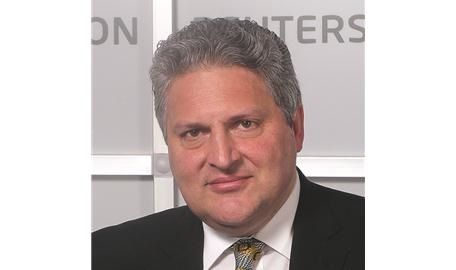IS IT JUST me or is there something awry at Credit Suisse? I mean, how many excuses did CEO Tidjane Thiam throw out when he announced the strategy “acceleration” on March 23 to try and mask – unsuccessfully in my view – his own shortcomings and those of the strategy he unveiled last October?
What he gave us to account for the update was altered market conditions (the worst January ever, spikes in equity volatility, spread widening in high-yield, reductions in ECM and HY issuance, etc); regulators (structural changes, specifically vis-à-vis Fed stress tests around securitisation); and trader skulduggery (ramping up illiquid credit positions).
Telling everyone that the strategy wasn’t formulated to take account of the set of market conditions we were presented with in January hardly engenders confidence in the plan’s robustness. Admitting that traders were allowed to build up illiquid fixed-income positions to juice revenues in order to try and skirt the cost-cutting programme but without the knowledge of decision-makers points to serious management shortcomings.
How humiliating, by the way, for Thiam and CFO David Mathers to have to go public on being completely in the dark about it. Suggesting that cultural changes were required clearly infers something sinister is afoot. What exactly was Thiam getting at when he said concealing the trades was unacceptable; about not naming names but that there had been consequences for those concerned? He makes it sound like a case of rogue trading. If, as Thiam said, the issue is cultural, he need only look in the mirror to figure out whose responsibility that is. It’s no good saying it all happened before you joined. That’s lame.
How many goes at getting the group strategy right does a CEO need and how many missed opportunities? After the initial plan announcement on October 20, there was an opportunity to update us on February 4 when Q4 and full-year 2015 results were announced. The market conditions that Thiam referenced and the build-up of illiquid positions were both clear to him by then. But we had to wait seven weeks until Wednesday’s acceleration announcement.
The word on Thiam is that he cuts a rather aloof, supercilious figure and, having no knowledge of investment banking but a mind-set sculpted by his background as a management consultant, sees the solution to the issues facing Credit Suisse as nothing more than a numbers game. Of course it is a numbers game to some extent, but it’s also about ensuring that what you end up with enables you to continue servicing core clients via a suite of businesses that hang together properly and that you build a self-reinforcing virtuous value-chain.
LET’S NOT KID ourselves: the strategy acceleration at Credit Suisse was nothing of the sort: it was a second attempt after the first one failed to go far enough (which is what many people said back in October when it was announced). And does blaming market conditions suggest that when they change again, we’ll get another strategy acceleration or change of direction? I thought strategies were supposed to be strategic, not tactical.
So what did we actually get this time? Another round of job cuts (2,000); a reappraisal of the global markets footprint; a decision to exit European securitised product trading, distressed credit trading and long-term illiquid funding; cuts in out-size illiquid positions (US CLO secondaries and distressed); cuts in RWA and capital usage; reduction in leverage; an increase in cost-saving targets; the creation of a solutions business line to house structured lending and cross-asset derivatives capabilities; a switch of FX cash and options out of global markets into the Swiss universal bank; and what I thought was a distinct shift towards building out equities as the credit business is re-footprinted and global markets undergoes surgery.
I noted some weeks ago that Credit Suisse said it would be rolling out a fast-track programme to get its best and brightest analysts in EMEA promoted more quickly to prevent them jumping ship. The programme, set to kick off in July, will mirror the US programme that has been in situ since 2013. Fair enough, but you have to wonder if retaining your best juniors can really be reconciled with 6,000 targeted job cuts, business-line shrinkage or closure and sinking morale.
Will the second bite of the strategy cherry bring required results? That’s a tough call to make at this point. The latest cuts and re-calibration included bits of business lines that had previously been considered marquee and where the bank presumably felt it offered some value and a superior offer. I know there aren’t supposed to be any sacred cows in the quest to create sustainable business models with non-volatile earnings. But still…
Some of the commentary around the 2% uptick in the Credit Suisse stock price on March 23 suggested it was linked to the strategy update. But the fact that the shares closed flat to the previous day suggest I’m right to have ceased paying any real attention to knee-jerk stock moves as having any significance.
The day after Thiam came out with his October plan, I’d written a commentary entitled: “Thiam ahead on points as Credit Suisse reveals all” relative to parallel efforts at other banks. I’m now reversing that early call and going flat. I’ll review once we get news of the Barclays plan, when we get a sense of how John Cryan is getting on with his plan to set Deutsche Bank on course and when we see the fruits (if any) of Bill Winters’ labours at Standard Chartered.
